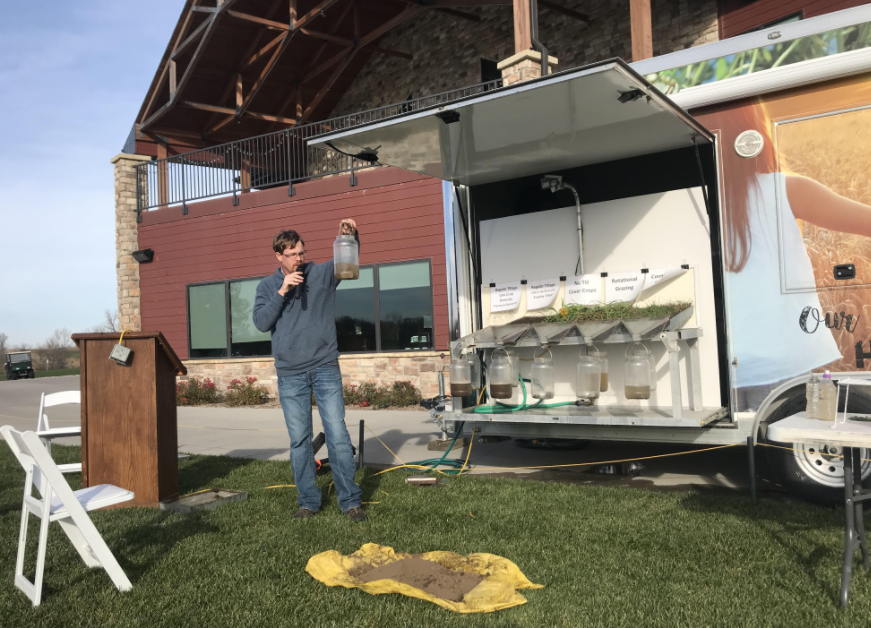 At a November 16 meeting, approximately half of the property owners who have land within the 8,000 acres of the Mozingo Creek Watershed came to hear of available cost-share programs toward the development of conservation practices on the Mozingo Lake Conference Center’s lawn.
At a November 16 meeting, approximately half of the property owners who have land within the 8,000 acres of the Mozingo Creek Watershed came to hear of available cost-share programs toward the development of conservation practices on the Mozingo Lake Conference Center’s lawn.
The informative meeting was planned by the Nodaway County Soil and Water Conservation District, along with additional sponsorship from the City of Maryville and Green Cover Seed. Several local, regional, state and federal leaders within the natural resources area spoke to the crowd about a variety of programs available to landowners that will improve conservation practices. Some of the cost-share programs include: Mississippi River Basin Healthy Watersheds Initiative (MRBI) have allotted $1,000,000 and the Nodaway County Soil and Water Conservation District will provide $200,000 to property owners for their efforts through the Parks, Soils and Water Sales Tax.
Luke Skinner, NCRS soil health specialist, presented demonstrations addressing soil health, and with a rainfall simulator, he spoke about sediment and nutrient washout. He explained the differences in soils conservation by maintaining practices over a number of years. While these practices are recommended for all farms, the 27 farmers who own land within the Mozingo Creek Watershed were the main target of this meeting. The health of Mozingo Lake as a viable water source for most of Nodaway County, including the 11,000 residents of Maryville, for the 100-year future hangs in the balance.
Maryville City Manager Greg McDanel reported to the audience the city has spent over $2.5 million to date in combating the water taste and smell issues. Maryville owns 3,000 acres around the 1,000-acre lake.
Tory Mason, Missouri Department of Conservation fishery management biologist, spoke about the health of the water in the lake which mirrors the health of the fish and other wildlife within and around the lake.
Nodaway County Soil and Water Conservation District Manager Colton Coffelt noted that his office has met one-on-one with 11 of the farmers. They have planned approximately $70,000 worth of programs spreading across about 1,100 acres the past two years. Some of the new practices mentioned were the planting of cover crops, terracing, developing ponds and catch basins and fencing around water structures to keep livestock.
Missouri State Conservationist Scott Edwards noted the goal is to reduce the amount of sediment flowing into the lake by 50 percent which would aid in the loss of nutrients within the watershed as well as the future longevity of the water source. This goal is hoped to aid Mozingo Lake in becoming a healthy watershed within four years and allowing the lake to be taken off the “impaired list.” These parameters will be measured by the US Geological Survey Water Monitoring and the MRBI program for the specific time. The mantra he spoke was, “Avoid, reduce or trap all nutrients” from flowing into the lake.




Facebook Comments